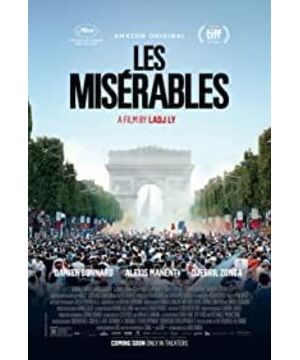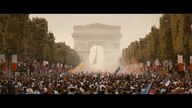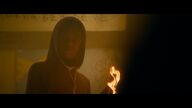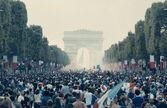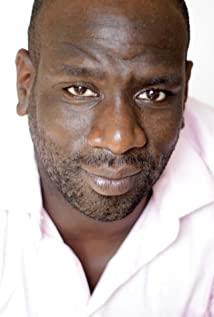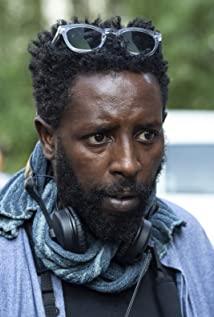Text/Evarnold
When I was young, there was a cartoon called "Victor and Hugo", which made me appreciate this great writer. He made the arrogant French so proud that he did not hesitate to put his name on the heads of two dumb thieves to promote his excellent traditional culture to children all over the world, and he did not hesitate to give the Great Tragedy Musical to the British to pack it to the whole world. The low tear-point crowds of the world propagate their revolutionary original intentions.
This time, in the name of a great writer, "Les Miserables" depicts a Paris (suburb) that is almost unfamiliar to melon-eaters all over the world. This place is no longer full of romantic imagination, but like Miami on the other side of the Atlantic.
From the perspective of the true, universal, and consumer culture that Hollywood has spread to the world, it seems that there is only one solution left for this terrible city-Batman. Even the Batman in the animated version of "The Dark Knight Returns" is also a success, after all, he finally defeated the new generation in Gotham.
However, this is not Hollywood, it is France. "Les Miserables" shot a Gotham City without Batman, shot a documentary version of "Training Day", made a condensed version of "Guling Street", made a serious version Gayrich. Unlike the trend of the cue era next to "Joker", "Les Miserables" confronts Europe's pain points with great fanfare.
The clues of "Les Miserables" are easy to understand. The lack of government action, the division among the people, and the balance of the game between the two sides were maintained on a thin wire, which was eventually torn apart by a missing kindergarten teacher. It shows how the incident was fermented, and it also shows the black shadows behind the incident.
From the camp, "Les Miserables" is surprisingly rich. The police force represents the government: high-ranking white female officers, aggressive white captains, uninspiring black followers, and new white members who "I want to be good". Surrounding the police car is the whole reality. The film does not shy away from what kind of people this neighborhood is made up of: the "mayor" who escorts the market, the Iraqi cult who persuades the people, the pretending gypsies, the lawless gangsters, and, most importantly, , The flowers of France. At the beginning of the film, what a beautiful day, everyone gathered in front of the Arc de Triomphe, wandering in the sea of red, white and blue, vividly interpreting the common meaning of the word "France" to them.
Subsequently, the film used the tried-and-tested "apprentice mode" to give the biggest surprise-who is the "event facilitator". After analysis, you will find that the whole event, from the cause to the fermentation, can really change the course of the event, there is only one type of people: children. The police force is only the responder with the greatest range of actions. The other bluffing and pretending forces have not changed their progress. This is funny and shocking. The real settlement of the second act of the kindergarten teacher incident was the restaurant where all the forces gathered. It turned out that there was a spark, everyone rushed to persuade, and the gentleman said nothing. In the third act, all the adults are smashed by the tricks of "Home Alone". It is conceivable that these adults must have done a lot more ruthless things if they can live today, but why have they lost the capital of resistance now? Because when they are struggling for themselves, they quietly lose the ability to communicate with the next generation, that is, with their future. This is evident in the communication bridges between father and son, mother and son in the whole film. When adults are overwhelmed by their own rules and order, they are far from discovering that the children have formed a set of external disguise and internal tacit understanding. The dark rule has become an extremely efficient self-protection and self-correction system. The plane man candidly filmed, and the three female dolls were resolved in one word, which turned out to be the cleanest way to resolve contradictions in the film.
Therefore, if you only look at the behavior of the police in this film, if you only see the cycle of violence and hatred, then you can only say that you can see the open-line theme of the film. The really valuable dark theme of the film is the aphasia and failure of the old rules in front of the new generation, and the eclipse of the words of yesterday in the face of today and tomorrow.
In addition, "Les Miserables" is constantly breaking audience expectations and creating certain surprises. For example, most people will inevitably notice and predict that things will go out of control within a day. Unexpectedly, the devilish progress bar put the real climax on the next day. For example, several aerial shots accidentally interspersed among countless handheld camera lenses and a stable and long-term view not only clearly explain the spatial relationship, but also make the world constructed in the audience's mind become reality in a more visually comfortable way. For example, the life and death confrontation and stalemate that ended early in the end.
Back to the topic, there is no Batman in reality. In the next ten years, where the West is heading, you can get a glimpse of it.
Rating: 5 stars.
View more about Les Misérables reviews


